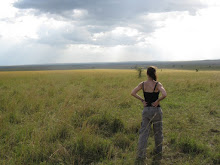Additional Letter From my Pop-
A recent article in The New York Times (see link below) reminded me of an experience that, decades later, has remained fresh in my mind.
In the ‘80s, after reading about the massacre at Wounded Knee, I wanted to go see the place for myself. I spent the night in a rental car in a nearby cornfield, then at an early hour climbed a hill overlooking the site of the tragedy.
Once darkness had lifted, I had a clear view all around. Not another soul in sight. The grassland was windless and silent.
Below and to my left, a mass grave presided over a spot where 4 Hotchkiss guns had lobbed 1-pound shells down on the fleeing Lakota. Off to my right, a scar in the earth deepened, yawned, and descended into a dry wash that had become blood- stained from sprawled bodies on the morning of December 29, 1890.
(It’s been said that soldiers of the 7th Cavalry, Custer's old unit, shouted "Remember Custer!" as they gunned down or butchered with sabers unarmed, fleeing men, women and children. Black Elk had heard the first shots at Pine Ridge Reservation, 10 miles away. He guessed what was happening and rode out with a small band of Braves, but by the time they arrived, the carnage was done. The best they could do was search among the slain for survivors. The soldiers respected that, and left them alone.)
As I sat looking around, I imagined the bloody rampage of soldiers riding down helpless Indians amid the deafening cacophony of shooting. Then three days later, following a blizzard, came the grisly harvest of frozen corpses....
The measured, slow, and unmistakable "clip-clop clip-clop" of a horse close behind pulled me out of my dark thoughts. The sound ceased as I got to my feet; I turned around and around but saw no other life - horse, or rider - across the wide expanse, either on the hillside or across the shallow valley.
By this time the sun had pulled clear of the horizon, and I got up to go. I walked to the ravine, intending to follow it down to the creek. Staring into the shadows, I could just distinguish the bones of a large animal - ribs, spine, and hip - emerging from the eroded, sandy soil. Guessing a cow had stumbled over the edge and perhaps broken its neck, I clambered down the slope for a closer look. And there I unearthed the fragile, old, encrusted skull of a horse.
This white guy, having no discernible trace of First Nations blood in his veins, has been struggling ever since to make sense of what had occurred. The experience touched me deeply and I came away convinced that Wounded Knee is far more than soil, grass, and a tragic story. It is alive.
This is the only monument
at Wounded Knee, placed in a graveyard to honor the slain.
I’m not an organizer and
no longer much of an activist, but when I read about an impending
"auction" of the hallowed ground, I felt compelled to tell my own
story in an effort to halt this transformation of sacred land into real
estate.
There’s no way that the
Lakota of Pine Ridge Reservation, with an 80% unemployment rate and per capita
income of $4,000, can raise the 3.9 million dollar price asked for this
hallowed ground. There's no chance that Congress could ever be
pressured, at this late date, into making Wounded Knee a National Historic
Monument. Something must be done to preserve Wounded Knee and the
somber lessons implicit in its history, and we have only to the end of
April to circumvent this tragedy. A respected national newspaper has
spoken up (http://www.nytimes.com/2013/04/12/opinion/save-wounded-knee.html?emc=eta1). Perhaps wealthy, casino-owning tribes could pool
resources to purchase the land and place it into perpetuity? Mitakuye
Oyasin is an Oglala phrase that means “we are all related,” and I'm
hoping someone who knows someone will read this message and come up with a
solution. Therefore...
Would you please help get
the word out by passing this on?
Alan J.



No comments:
Post a Comment